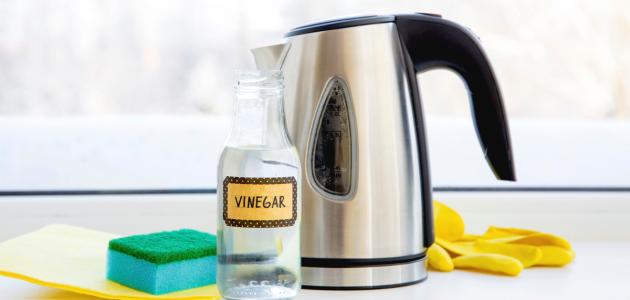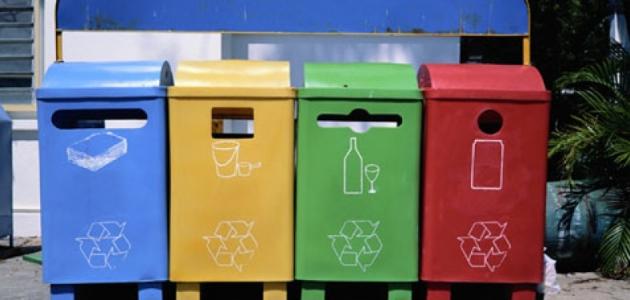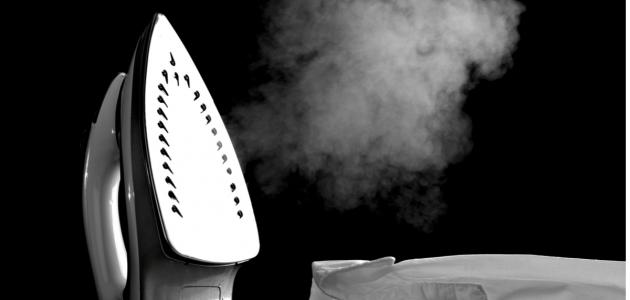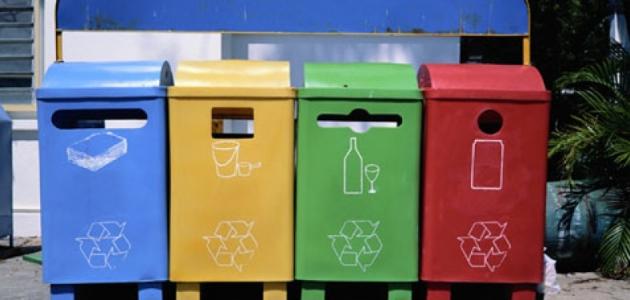Cleaning the water kettle from the inside
use vinegar
Vinegar helps clean electric kettles from the inside, by making a solution of vinegar and water in equal quantities, then filling half to three-quarters of the kettle with this solution, and boiling it inside the kettle to remove limescale deposits. The amount of vinegar in the solution can be increased if the deposits are many and difficult to remove. .
The solution is left inside the kettle for 20 minutes after boiling, and the period can be increased if the sediments are large. Then the solution is poured from the kettle, and rubbed from the inside using a sponge. After that, it is washed from the inside and dried with a cloth, and if the smell of vinegar is strong inside the kettle You can boil the water inside it and pour it out several times until the vinegar taste and smell disappear.
use lemon
Limescale can be removed from inside the kettle using lemon, by mixing the juice of one lemon with water and pouring it into the kettle halfway, then boiling the solution, and leaving it after boiling for 30 to 60 minutes. The manufacturer’s instructions must also be read before putting lemon or vinegar to avoid damaging them. Some kettles react with acid or some other liquids and cause damage. To avoid this, a drop of the solution or mixture is placed in an unnoticeable place in the kettle to test whether it will leave a trace or not before starting the cleaning process.
Read also:How to make a crown for childrenYou can put some lemon slices, fill the kettle with water, and boil it, then leave it in this state for about an hour. You can also clean the kettle by filling it with water, adding half a teaspoon of citric acid to it, boiling the solution, then washing the kettle with water from the inside.
Use baking soda
The kettle can be cleaned from the inside by making a solution of water and baking soda, by putting a small spoonful of soda with water and mixing it, then pouring the solution into the kettle to boil in it, leaving it for 20 minutes after boiling, then pouring it out and washing the kettle with cold water.
Use a commercial cleaner
Commercial detergent can be used if you do not want to use natural detergents. This is done by purchasing the detergent from commercial stores, placing an amount of it with water such that the kettle is filled half to three-quarters full until it boils, then leaving it inside the kettle until it cools. After that, the solution is poured and wiped clean. Wash the kettle from the inside using a piece of cloth, then wash it from the inside with cold water more than once until you are sure that the solution has completely disappeared from the inside.
Cleaning the water kettle from the outside
External dirt can be removed from the kettle by gently wiping it with a sponge dipped in water and dishwashing liquid, taking care not to use a rough sponge to avoid scratching the kettle. Some kettles made of stainless steel or copper scratch easily, then dry them with a soft cloth. It is necessary not to immerse it in water to avoid damaging its electrical parts.
Read also:How to wash a suit at homeThe water filter, if any, is cleaned by removing it from the kettle and washing it with hot water, then wiping it gently with a soft cloth, leaving it to dry, then reinstalling it in its place. If lime has accumulated on the filter, it can be cleaned by placing it inside a bowl filled with vinegar, and leaving it A few minutes until the lime begins to disintegrate, after which it is cleaned using a sponge. Stainless steel electric kettles can also be polished from the outside by applying olive oil to a soft cloth and gently wiping the outside to avoid scratching them.
Tips for maintaining your water kettle
The kettle can be maintained by cleaning it periodically, especially if the water used in the kettle is hard and increases the accumulation of lime, lime, and dirt in it, which reduces its efficiency. Therefore, this can be avoided by cleaning the kettle at least once a week. It is also recommended not to leave an amount of Water inside the kettle after use to avoid increasing the amount of sediment inside it. However, only what the person needs of water should be boiled, and one should also avoid immersing the heating device located at the bottom of the kettle in water to avoid damaging it.
water boiler
People use a water kettle every day to prepare hot drinks such as coffee and tea. It is also used when preparing some foods, such as: rice, pasta, and other foods that need boiling water. However, limescale may accumulate on the bottom and sides of the kettle, in the form of solid white deposits. It is called calcium carbonate (in English: limescale). It is often formed in enclosed spaces and places where water evaporates, which makes it difficult to remove. However, many metal kettles are coated with a thin layer on the inside of their bottoms and sides to prevent limescale from forming, but only after a period of use. The layer begins to disappear.
Read also:Rationalizing the handling of household waste








